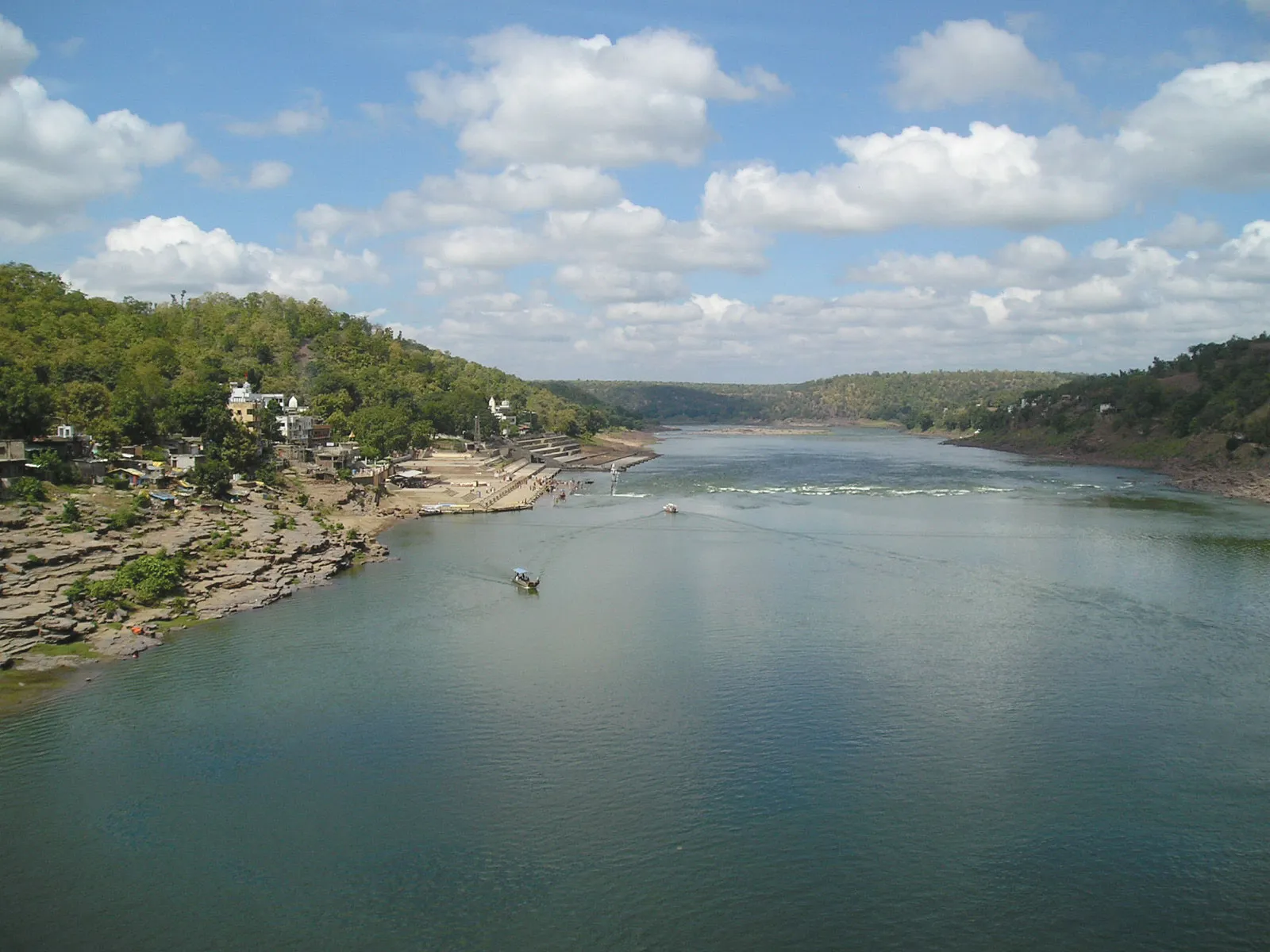River Narmada

Religious Significance
River Narmada is one of the most sacred rivers in our country and is worshipped as a Goddess. People living along the banks of the river consider her to be holier than the Ganges. Thousands of pilgrims circumambulate the river during the annual Naramada parikrama. There are many thirthas on the banks of the river including famous Maheshwar and Omkareshwar temples.
The river is closely associated with Lord Shiva. There are many stories that describe the origin of the river. According to one, the river was formed from the perspiration of Lord Shiva, while performing the tandava (Lord Shiva’s cosmic dance). Naturally formed Shiva lingams or banas are found in the river. These stones are considered very sacred by devout Hindus.

Ecological Significance
The Narmada river is the largest west flowing river in India. It is also one of the least polluted and disturbed waterways in the country. It supports a large variety of aquatic life including the marsh crocodile and the mahsa fish.
Although the dry deciduous forests along the river is not exceptional in terms of biodiversity or endemic species, the region is still an prime natural habitat of large animals – tiger, gaur, wild dog, sloth bear, black buck etc. The region’s vegetation includes culturally and economically important species like teak, bamboo, mahua, tendu etc. Hence, this region plays an important role in the long-term conservation of these species.



Place of Origin: Amarkantak Hills, Madhya Pradesh
Length: 1289 km
Confluence: Arabian Sea, Gulf of Cambay